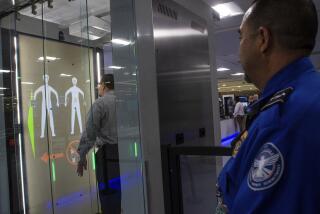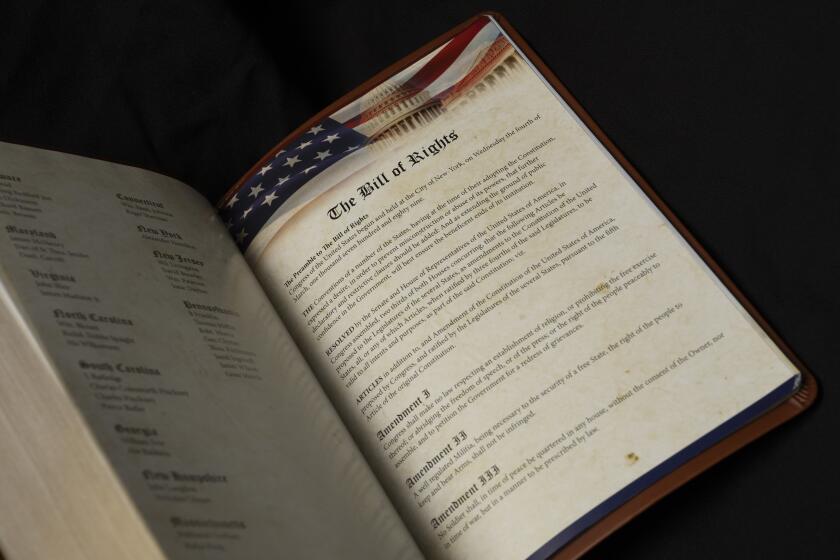Travel List to Be Used in Profiling Test
WASHINGTON — Passenger records of anyone who took a flight in June 2004 must be turned over to the Transportation Security Administration for a test of a new profiling system to identify suspected terrorists, federal authorities said Tuesday.
Security officials plan to consolidate information from the airlines’ “Passenger Name Records” into a database that can be compared against names appearing on terrorist watch lists maintained by the Department of Homeland Security, said Justin Oberman, the TSA’s national risk assessment officer. The period was chosen for its high level of air traffic, he said.
For its test of the program, known as Secure Flight, the government is asking for such information as a passenger’s name, address, telephone number, frequent flier information, hotel or car rental reservations associated with the flight, method of payment and even the type of meal ordered.
From this, security officials would whittle a more streamlined list of vital information.
“We don’t want to leave anything to chance,” Oberman said.
The airlines have 30 days to comment on the TSA order. If airlines do not turn over the information voluntarily during the comment period, they would be ordered to do so in November.
Laws passed after the Sept. 11 attacks gave the security agency the authority to order airlines to turn over passenger information.
The test is expected to begin in mid- to late November and last for 30 days.
Oberman said the government would not make final decisions on how to use the information until after the test.
The test, Oberman said, would help define what categories of passenger information the government would use, and it would provide a trial run for collection technology.
Under the current system, airlines check passenger names against watch lists maintained by the government.
However, because of fears of leaks, not all the names of suspected terrorists are included on the lists provided to the airlines.
The bipartisan commission that investigated the Sept. 11 attacks recommended that the government take over the screening functions.
Secure Flight is being built on the remnants of a never-implemented profiling system known as CAPPS II.
The current system, CAPPS I, which stands for Computer Assisted Passenger Pre-Screening, was in effect on Sept. 11, 2001, and flagged six of the 19 hijackers for further scrutiny.
All that was required, though, was a closer inspection of the hijackers’ checked baggage, which revealed nothing unusual.
When Homeland Security Secretary Tom Ridge announced the demise of the CAPPS II program in July for reasons that included privacy concerns, he made the motion of putting a stake through his heart.
Barry Steinhardt, director of the American Civil Liberties Union’s technology and liberty program, resurrected the image Tuesday, along with the specter of privacy invasion, after hearing of the government’s new plan.
“The documents beg the question of whether the vampire has risen from the dead,” he said.
At the early stage of the program, the privacy concerns remain similar to those during the government’s attempt to start up CAPPS II, Steinhardt said.
In an effort to appease critics, the Secure Flight program has narrowed the scope of screening. For instance, unlike CAPPS II, the new system would focus only on suspected terrorists and not include additional searches for criminal fugitives.
But even after narrowing the scope, Steinhardt said, the government is still casting too wide a net in order to capture possible terrorists. Parts of the old system are to remain in place during the test.
Travelers would be able to request copies of their Passenger Name Records, and a “robust redress system to help resolve disputes” would be put in place and expanded in the final program, said Yolanda Clark, a TSA spokeswoman.
This is expected to include a process by which individuals can clear their names if they find themselves mistakenly included among suspected terrorists.
More to Read
Sign up for Essential California
The most important California stories and recommendations in your inbox every morning.
You may occasionally receive promotional content from the Los Angeles Times.








